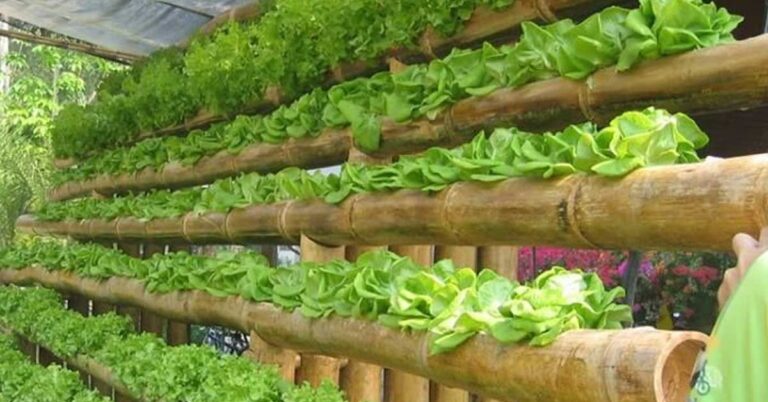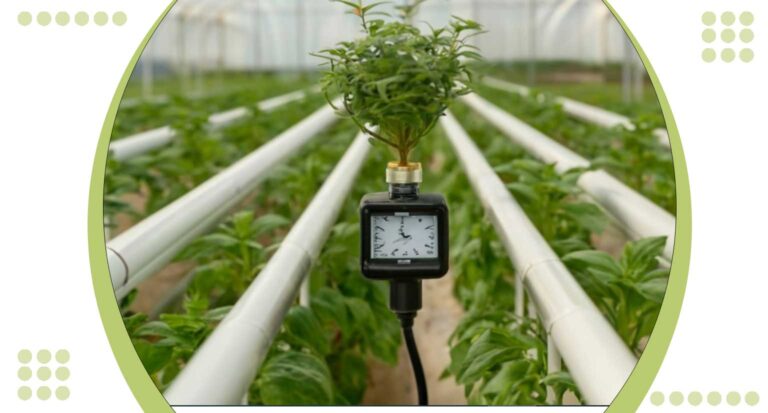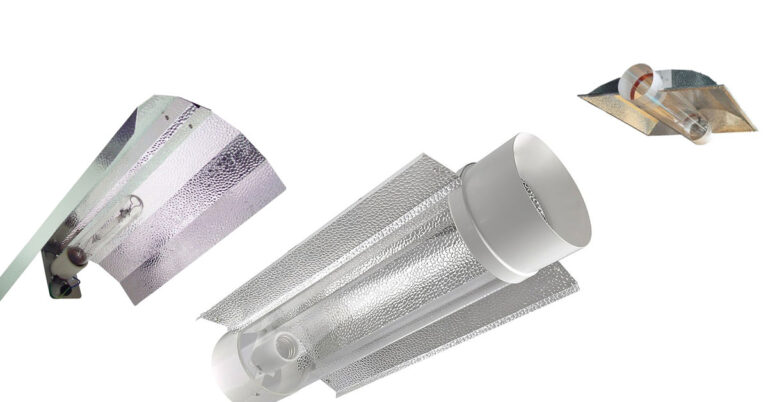Vertical Hydroponics Systems: Maximize Yield with 3 Innovative Solutions
Vertical hydroponics systems represent a cutting edge approach to sustainable agriculture, revolutionizing how crops are cultivated in urban and limited space environments. By harnessing advanced technologies and innovative designs, these systems optimize space utilization and enhance crop yields significantly. From commercial farms to urban gardens, the adoption of vertical hydroponics is reshaping the future of agriculture in the United States and beyond.
Vertical hydroponics systems have revolutionized modern agriculture, offering a sustainable and space efficient solution for cultivating crops. By stacking growing beds or towers vertically, these systems maximize the use of limited space, making them particularly suitable for urban environments where land availability is a challenge.
This innovative approach eliminates the need for traditional soil based farming, instead relying on nutrient rich water solutions to nourish plants directly, leading to enhanced growth rates and higher yields.
Harnessing the power of innovation, vertical hydroponics systems integrate advanced features such as automated nutrient delivery, LED lighting optimized for plant growth cycles and modular designs that scale effortlessly.
These innovations not only increase productivity but also reduce water consumption and minimize environmental impact compared to traditional farming methods. As agriculture faces challenges like climate change and urbanization, adopting these solutions becomes pivotal in ensuring food security and sustainable farming practices.
What Is A Vertical Hydroponic System?
Vertical hydroponic systems are innovative gardening setups designed to grow plants vertically, often in stacked layers or towers, without soil. Instead of relying on traditional soil based cultivation, these systems use nutrient rich water solutions to deliver essential minerals and elements directly to the plant roots.
At the core of a vertical hydroponic system are reservoirs or tanks that hold the nutrient solution. Pumps and tubing circulate the solution through the system, ensuring that each plant receives the necessary nutrients for optimal growth.
The roots of the plants are typically suspended or housed within a growing medium such as perlite, vermiculite or coconut coir, allowing them to absorb nutrients efficiently.
One of the primary advantages of vertical hydroponic systems is their space saving design. By growing plants vertically, these systems utilize limited space more effectively compared to traditional horizontal gardening methods.
This makes them particularly well suited for urban environments, balconies, small gardens and indoor spaces where space is at a premium.
Furthermore, vertical hydroponic systems promote water conservation by recirculating nutrient solutions, reducing water usage compared to conventional soil based gardening. They also minimize the risk of soil borne pests and diseases, leading to healthier plants and higher yields.
Vertical hydroponic systems are versatile and can accommodate a wide variety of plants, including vegetables, herbs, fruits and decorative plants. From lettuce and tomatoes to strawberries and flowers, the possibilities are virtually endless.
In summary, vertical hydroponic systems offer a sustainable, space efficient and innovative approach to gardening, enabling individuals to grow fresh produce in any environment, regardless of space limitations or geographical constraints.
Benefits Of Vertical Hydroponics
Vertical hydroponics systems offer numerous advantages that make them highly desirable for both hobbyist gardeners and commercial growers. Here’s a detailed look at why vertical hydroponics is considered a superior gardening method.
Space Efficiency
Vertical hydroponic systems maximize space utilization by growing plants upwards instead of outwards. This vertical orientation allows growers to cultivate a larger number of plants in a smaller footprint, making them ideal for urban environments, apartments, balconies and indoor settings where space is limited.
Increased Yields
By optimizing growing conditions such as nutrient levels, pH balance and lighting, vertical hydroponic systems promote faster growth and higher yields compared to traditional soil based gardening methods.
The controlled environment ensures that plants receive the precise amount of nutrients and water they need, resulting in healthier and more abundant harvests.
Water Conservation
Hydroponic systems are inherently water efficient, as they recirculate nutrient solutions and minimize water wastage. Compared to conventional soil based agriculture, which can be highly water intensive, vertical hydroponics reduces water usage by up to 90%. This makes it an environmentally sustainable option, especially in regions prone to drought or water scarcity.
Reduced Pest and Disease Risks
Without soil, vertical hydroponic systems eliminate many of the common pests and diseases that affect traditional gardens. Since plants are grown in a sterile, soil less environment, there is less risk of soil borne pathogens, weeds and pests infesting the crops. This reduces the need for chemical pesticides and herbicides, resulting in cleaner, healthier produce.
Year Round Cultivation
Vertical hydroponics enables year round cultivation regardless of seasonal variations or climate conditions. With controlled indoor environments, growers can simulate ideal growing conditions for their crops, allowing them to harvest fresh produce throughout the year.
This consistent supply of fresh, locally grown food is especially valuable in regions with short growing seasons or limited access to fresh produce.
Customizable and Versatile
Vertical hydroponic systems are highly customizable and adaptable to various plant species, growth stages and environmental conditions. Growers have the flexibility to adjust nutrient formulations, lighting schedules and other parameters to meet the specific needs of their crops.
From leafy greens and herbs to vine crops and flowering plants, vertical hydroponics can accommodate a wide range of plant varieties. Vertical hydroponics offers a host of benefits including space efficiency, increased yields, water conservation, pest and disease resistance, year round cultivation and versatility.
Whether you’re a novice gardener looking to grow fresh herbs on your kitchen counter or a commercial farmer aiming to maximize production in limited space, vertical hydroponics provides a sustainable and efficient solution for modern agriculture.
Maximize Yield with 3 Innovative Solutions
1. Automated Nutrient Delivery Systems
One of the key innovations driving the success of vertical hydroponics systems is the integration of automated nutrient delivery systems. These systems ensure precise and consistent delivery of essential nutrients directly to plant roots, optimizing nutrient uptake and promoting vigorous growth. By automating this process, growers can maintain ideal nutrient levels tailored to each crop’s specific requirements throughout its growth cycle. This precision not only enhances yield but also reduces resource waste, making vertical hydroponics a more sustainable farming option.
2. LED Grow Lights Optimized for Plant Growth Cycles
Another critical innovation in vertical hydroponics is the use of LED grow lights designed to mimic natural sunlight and tailored to plant growth cycles. These lights emit specific wavelengths of light that promote photosynthesis and plant development, enhancing overall crop productivity. By adjusting light intensity and spectrum based on the growth stage of plants, growers can maximize energy efficiency and accelerate growth rates. This technology allows for year round cultivation, overcoming seasonal limitations and ensuring consistent, high quality harvests regardless of external conditions.
3. Modular and Scalable Design
The modular design of vertical hydroponics systems is instrumental in maximizing yield and operational efficiency. These systems are constructed with interchangeable components that can be easily configured and expanded as needed. Growers can start small and gradually scale up their operations by adding more growing units or tiers vertically. This scalability not only increases production capacity but also offers flexibility in adapting to changing market demands or space constraints. Moreover, modular designs facilitate easier maintenance and management of crops, ensuring optimal growing conditions and minimal downtime.
Simple DIY Vertical Hydroponic System Set Ups
Creating your own DIY vertical hydroponic system can be an exciting and rewarding project for both beginners and experienced gardeners alike. Here are detailed instructions for two simple yet effective DIY vertical hydroponic setups.
PVC Pipe Tower System
Materials Needed
- PVC pipes (4-inch diameter).
- PVC end caps.
- PVC T-connectors.
- PVC glue.
- Net pots.
- Growing medium (e.g. perlite, vermiculite).
- Nutrient solution reservoir.
- Submersible water pump.
Assembly Steps
- Cut the PVC pipes into equal lengths, depending on the desired height of your tower.
- Attach end caps to the bottom of each pipe to create sealed containers.
- Drill holes evenly spaced along the sides of the pipes, large enough to accommodate net pots.
- Connect the PVC pipes vertically using T-connectors to create a tower structure.
- Insert net pots into the drilled holes, ensuring they fit snugly.
- Fill the net pots with the chosen growing medium and plant your desired crops.
- Set up the nutrient solution reservoir at the base of the tower and connect it to the submersible water pump using tubing.
- Install the water pump inside the reservoir and adjust the tubing to allow for a steady flow of nutrient solution to the top of the tower.
- Monitor nutrient levels and water flow regularly to ensure optimal plant growth.
Gutter Garden System
Materials Needed
- Metal or plastic gutters.
- End caps for gutters.
- PVC pipes (for support).
- Net pots.
- Growing medium.
- Nutrient solution reservoir.
- Submersible water pump.
Assembly Steps
- Cut the gutters into equal lengths, depending on the available space and desired number of planting rows.
- Attach end caps to both ends of each gutter section to create sealed containers.
- Drill holes along the bottom of the gutters, spaced evenly apart, to allow for drainage.
- Secure the gutters horizontally to a sturdy support structure using PVC pipes or brackets, ensuring they are level.
- Place net pots into the drilled holes along the gutter bottoms.
- Fill the net pots with the growing medium and plant your chosen crops.
- Position the nutrient solution reservoir at one end of the gutter system and connect it to the submersible water pump using tubing.
- Install the water pump inside the reservoir and set up the tubing to deliver the nutrient solution evenly along the gutters.
- Monitor water flow and nutrient levels regularly to maintain optimal growing conditions.
These simple DIY vertical hydroponic systems offer space efficient solutions for growing a variety of crops indoors or outdoors. With some basic materials and careful assembly, you can enjoy fresh, homegrown produce year round while exploring the benefits of hydroponic gardening.
Conclusion
Vertical hydroponics systems represent a transformative approach to gardening, offering unparalleled efficiency, sustainability and versatility. With the ability to grow crops vertically in limited spaces, these systems empower individuals to cultivate fresh produce regardless of location or environmental constraints.
By harnessing the power of nutrient rich water solutions and innovative design, vertical hydroponics redefines traditional gardening practices and paves the way for a greener, more resilient future. Embrace the potential of vertical hydroponics to revolutionize your gardening experience and cultivate abundance in any setting.







